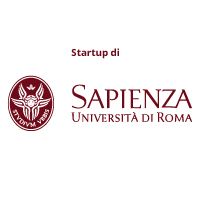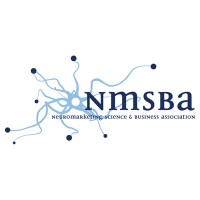
The Approach-Withdrawal is a model related to the degree of appreciation that mediates the overt personal reaction towards a certain “stimulus”. It can be motivated by a balance between to go toward (approach) or to go away from (avoid or withdraw) something.
That’s why this concept could be very useful to assess the appreciation and consequent motivation towards a certain stimulus (Harmon-Jones et al., 2013).
From a neurophysiological point of view, the Approach-Withdrawal model has been linked to the balance between the Behavioural Approach (BAS) and Inhibition Systems (BIS) (Sutton and Davidson, 1997). As early as 1984, Davidson proposed neurophysiological evidence of Approach-Withdrawal behaviour in terms of asymmetry of frontal brain activity, measured through Electroencephalography (EEG) during emotional states (Davidson et al, 1990).
Therefore, an Approach-Withdrawal neurophysiological index can be derived by processing the EEG signal on the Pre-Frontal Cortex, as demonstrated in a variety of fields and conditions, like experimental conditions characterized by a low, a neutral and a high-approach positive mindset (Gable and Jones, 2008), in clinical settings (Kimura 1972), but also in daily-life applications such as the evaluation of public service announcements (Cartocci et al., 2018).
According to the literature best practices, BrainSigns assess the user’s motivation and degree of appreciation by computing the asymmetry of the frontal brain alpha rhythms, providing evidence of the significance of such indicator in different fields, such as the evaluation of video contents (Vecchiato et al., 2011), odours (Vozzi et al., 2023), food and tastes (Di Flumeri et al., 2017), but also when handling new products, devices and interfaces (Modica et al., 2018).
Therefore, the Approach-Withdrawal becomes a powerful indicator that BrainSigns deploys in a variety of applications: in neuromarketing, employed as measure of interest to identify the strengths and weaknesses of a marketing stimuli, such as the most interesting as well as the less performing scenes of a video, or the most attractive packaging of a product, or the most appealing layout of a shop or exhibition space (Mancini et al., 2022 , Babiloni and Cherubino, 2022).
The index is employed also in neuroaesthetics, to measure the perception of beauty during arts performance or shows (Cartocci et al.,2021 ).
The index is notable also in the field of human factor assessment, for example to evaluate the impact of a new cockpit configuration, or the level of attractiveness and acceptability of a new Human Machine Interaction solution (Borghini et. al., 2023 ).
REFERENCES
- Babiloni, F., Cherubino, P. (2022). Consumer Neuroscience: A Neural Engineering Approach. In: Thakor, N.V. (eds) Handbook of Neuroengineering. Springer, Singapore.
- Borghini, Gianluca, et al. "Cooperation and mental states neurophysiological assessment for pilots’ training and expertise evaluation," 2023 IEEE International Workshop on Technologies for Defense and Security (TechDefense), Rome, Italy, 2023, pp. 77-82.
- Cartocci, Giulia et al. “NeuroDante: Poetry Mentally Engages More Experts but Moves More Non-Experts, and for Both the Cerebral Approach Tendency Goes Hand in Hand with the Cerebral Effort.” Brain sciences vol. 11,3 281. 25 Feb. 2021, doi:10.3390/brainsci11030281
- Cartocci et al., “Neurophysiological Measures of the Perception of Antismoking Public Service Announcements Among Young Population,” Front. Hum. Neurosci., vol. 12, Aug. 2018.
- Davidson, Richard J., et al. "Approach-withdrawal and cerebral asymmetry: emotional expression and brain physiology: I." Journal of personality and social psychology 58.2 (1990): 330.
- Di Flumeri, Gianluca, et al. "EEG-based approach-withdrawal index for the pleasantness evaluation during taste experience in realistic settings." 2017 39th annual international conference of the IEEE engineering in medicine and biology society (EMBC). IEEE, 2017.
- Gable, Philip A., and Eddie Harmon-Jones. "Approach-motivated positive affect reduces breadth of attention." Psychological science 19.5 (2008): 476-482.
- Harmon-Jones, Eddie, Cindy Harmon-Jones, and Tom F. Price. "What is approach motivation?." Emotion Review 5.3 (2013): 291-295.
- Mancini, Marco, et al. "Neuroscientific methods for exploring user perceptions while dealing with Mobile Advertising: A novel and integrated approach." Frontiers in Neuroergonomics 3 (2022): 835648.
- Modica, Enrica, et al. "Neurophysiological responses to different product experiences." Computational Intelligence and Neuroscience 2018 (2018).
- Sutton, Steven K., and Richard J. Davidson. "Prefrontal brain asymmetry: A biological substrate of the behavioral approach and inhibition systems." Psychological science 8.3 (1997): 204-210.
- Vecchiato, Giovanni, et al. "Spectral EEG frontal asymmetries correlate with the experienced pleasantness of TV commercial advertisements." Medical & biological engineering & computing 49 (2011): 579-583.
- Vozzi, Alessia, et al. "Time-Dependent Analysis of Human Neurophysiological Activities during an Ecological Olfactory Experience." Brain Sciences 13.9 (2023): 1242.



